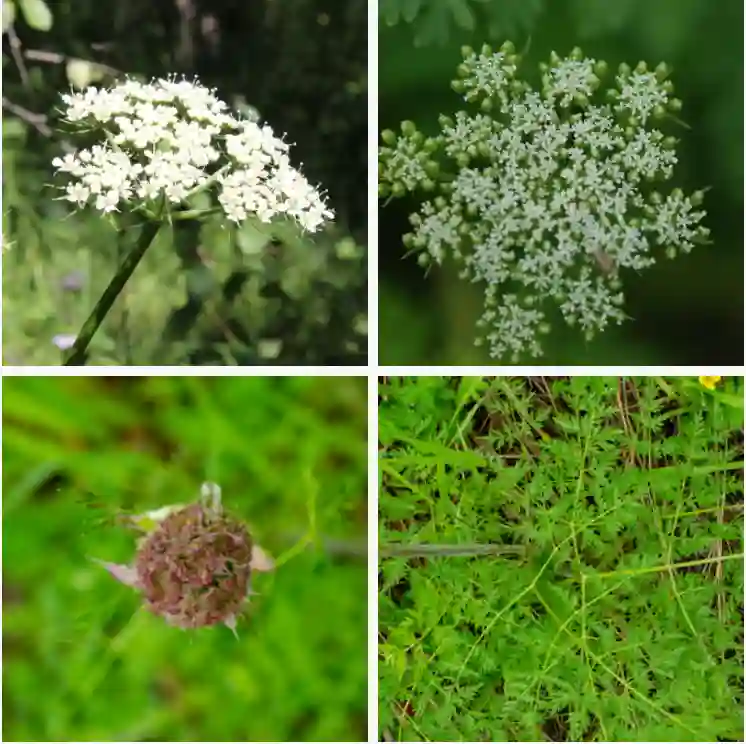Discovering the Cyrillaceae Family
As an avid plant enthusiast, I find myself drawn to the unique families and genera that populate our botanical world. One family that has piqued my interest is the Cyrillaceae, which includes the genera Cliftonia and Cyrilla. Both offer a glimpse into the diverse life that thrives in specific habitats, primarily in the southeastern United States.
The Cyrillaceae Family: An Overview
The Cyrillaceae family is often recognized for its relatively small size, but its members have a significant ecological role. Comprising mainly evergreen trees and shrubs, this family is known for its ability to thrive in wetland areas. The unique characteristics of Cyrilla and Cliftonia make them fascinating subjects for both casual observers and serious botanists.
Understanding Cliftonia
Cliftonia is a genus of flowering plants native to the southeastern United States. I’ve encountered it often in lowland areas and swamps. This genus is distinguished by its shrubby appearance and small, clustered flowers that can often go unnoticed at first glance. The leaves are glossy, dark green, and can be quite striking, especially when backlit by the sun.
One of my favorite aspects of Cliftonia is its adaptability. It thrives in acidic, nutrient-poor soils, a trait that makes it a survivor in its swampy habitat. During my explorations, I’ve observed that Cliftonia tends to form dense thickets, providing excellent cover for various wildlife species. It’s amazing to think that such a humble shrub plays a role in supporting local ecosystems.
Delving into Cyrilla
Cyrilla, the more recognized genus within the Cyrillaceae family, features several species, with Cyrilla racemiflora being the most prominent. Known commonly as the southern black titi, this tree has a much more noticeable presence. It can reach heights of up to 20 feet and produces stunning white, fluffy flower clusters that bloom in late spring.
When I first saw a Cyrilla tree in full bloom, I was captivated. The flower clusters are not just beautiful; they also attract a variety of pollinators. I’ve spotted bees and butterflies flocking to these trees, drawn in by the sweet scent that wafts through the air. It’s moments like these that remind me of the interconnectedness of our natural world.
Ecological Importance of Cyrillaceae
Both Cliftonia and Cyrilla play crucial roles in their ecosystems. They thrive in wet environments, often found in swamps, marshes, and along riverbanks. This means they help stabilize soils, reduce erosion, and provide habitat for various species. In my experiences, hiking through these wetland areas has often revealed the critical role these plants play in maintaining the health of their ecosystems.
Conservation and Threats
Despite their resilience, members of the Cyrillaceae family face threats from habitat destruction and climate change. Wetlands are among the most endangered ecosystems globally, and the loss of these habitats can lead to declines in species like Cliftonia and Cyrilla.
I’ve seen firsthand how urban development encroaches on these natural spaces. It’s disheartening to witness the loss of such rich biodiversity. Conservation efforts are essential to protect these plants and their habitats. Organizations dedicated to wetland restoration are crucial in ensuring that these unique ecosystems can continue to thrive.
Cultivating Interest in Cyrillaceae
For those interested in horticulture or simply appreciating nature, both Cliftonia and Cyrilla can be wonderful additions to a native garden. Their unique adaptations to wet environments make them suitable for rain gardens or other areas where water management is a concern. I’ve incorporated several native plants into my own garden to support local wildlife, and the beauty of these species adds an extra layer of interest.
In my experience, cultivating these plants can be incredibly rewarding. Watching them grow and contribute to the surrounding ecosystem brings a sense of fulfillment. Moreover, they serve as a reminder of the beauty and complexity of our natural world.
Conclusion
Exploring the Cyrillaceae family has deepened my appreciation for the subtleties of our ecosystem. The genera Cliftonia and Cyrilla showcase the intricate relationships between plants and their environments. From their ecological importance to their aesthetic value, these plants offer a unique perspective on the world around us.
As I continue my journey in the world of plants, I remain committed to understanding and advocating for the preservation of these remarkable species. They remind us of the vital connections we share with nature and the importance of protecting our planet’s rich biodiversity.




